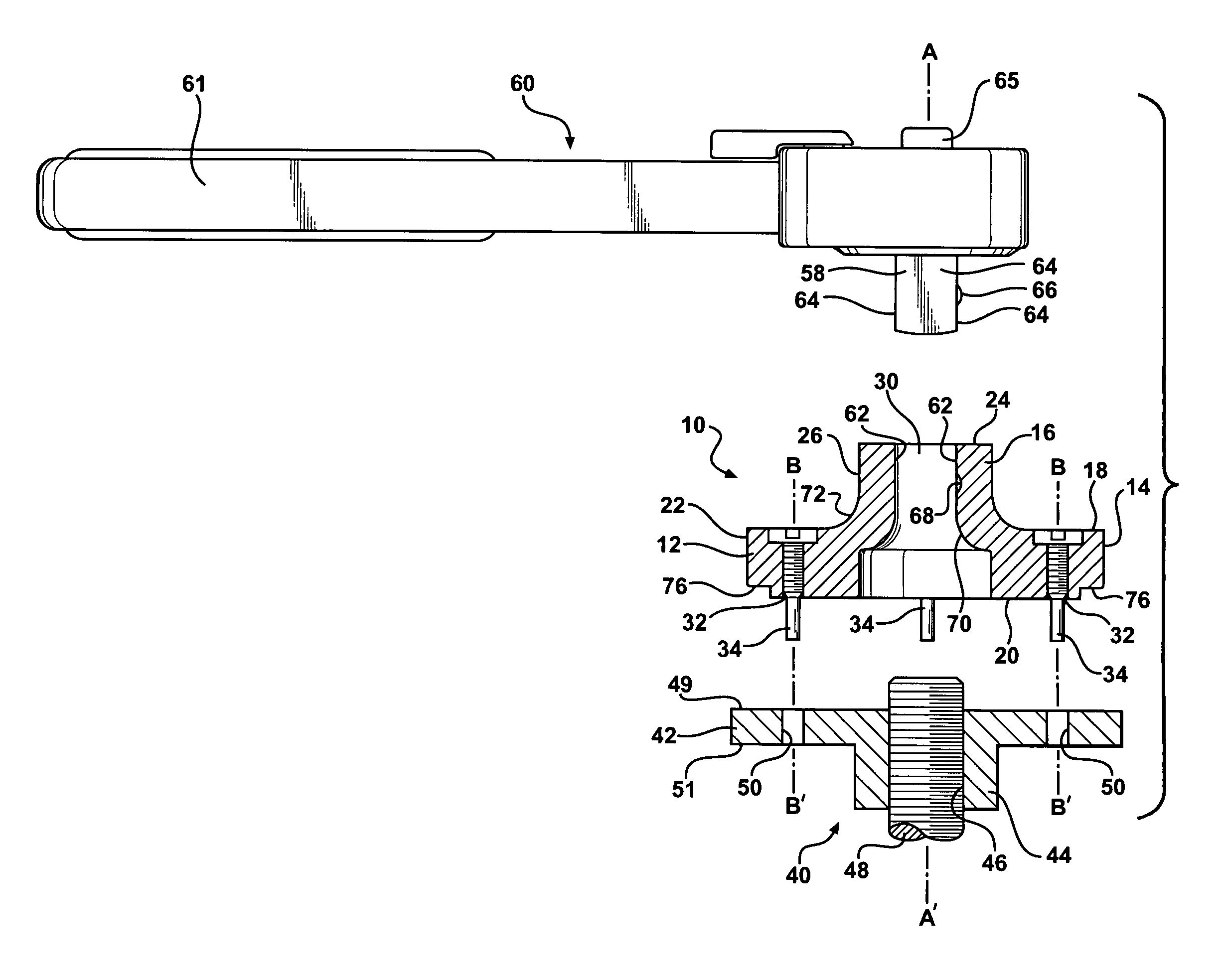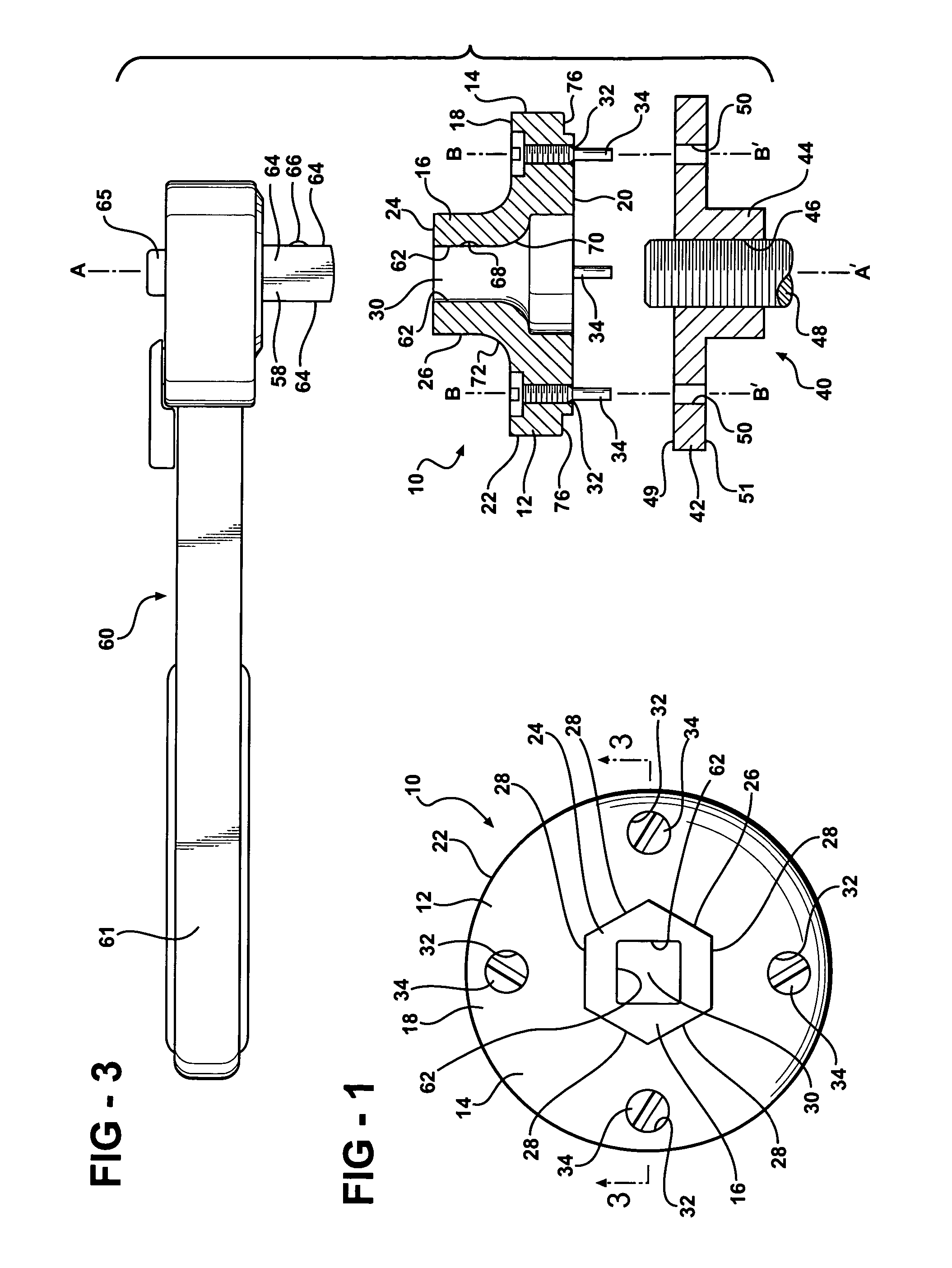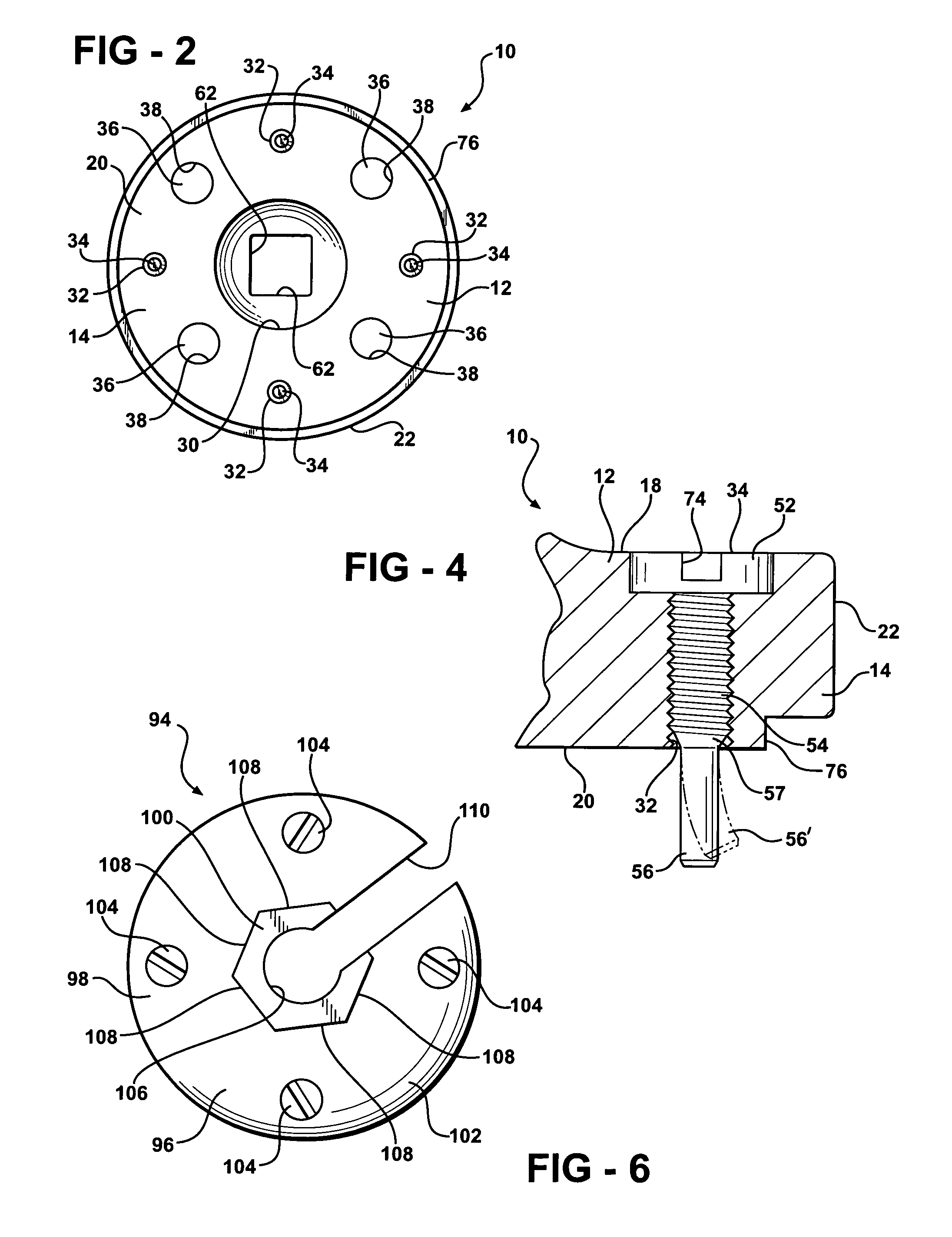Spanner socket
a spanner and socket technology, applied in the field of spanner sockets, can solve the problems of prone to loss, damage and wear of spanner tools, requiring substantial costs, and maintaining a large and bulky tool collection, and achieving the effect of convenient removal and reconfiguration, and simple compact design
- Summary
- Abstract
- Description
- Claims
- Application Information
AI Technical Summary
Benefits of technology
Problems solved by technology
Method used
Image
Examples
Embodiment Construction
[0029]FIGS. 1 and 2 illustrate a preferred embodiment of the present invention. A spanner socket 10 is constructed as a base member 12 including a generally cylindrical portion 14 and a faceted extension portion 16. Generally cylindrical portion 14 has an upper surface 18, a lower surface 20 and a circumferential outer edge surface 22. Cylindrical portion 14 is symmetrically formed about a vertical axis A-A′ (see FIG. 3). Extension portion 16 is also symmetrically formed about axis A-A′ and extends upwardly from upper surface 18 of cylindrical portion 14. Extension portion 16 has an upper surface 24 and a faceted circumferential outer edge portion 26. Surfaces 18, 19 and 24 are disposed generally parallel to one another and normal to axis A-A′.
[0030]Faceted edge portion 26 defines a number, of radially outwardly facing flats or engagement surfaces 28 of equal size circumferentially arranged around axis A-A′. Preferably, edge portion 26 is formed as a hex-head of standard size such t...
PUM
 Login to View More
Login to View More Abstract
Description
Claims
Application Information
 Login to View More
Login to View More - R&D
- Intellectual Property
- Life Sciences
- Materials
- Tech Scout
- Unparalleled Data Quality
- Higher Quality Content
- 60% Fewer Hallucinations
Browse by: Latest US Patents, China's latest patents, Technical Efficacy Thesaurus, Application Domain, Technology Topic, Popular Technical Reports.
© 2025 PatSnap. All rights reserved.Legal|Privacy policy|Modern Slavery Act Transparency Statement|Sitemap|About US| Contact US: help@patsnap.com



